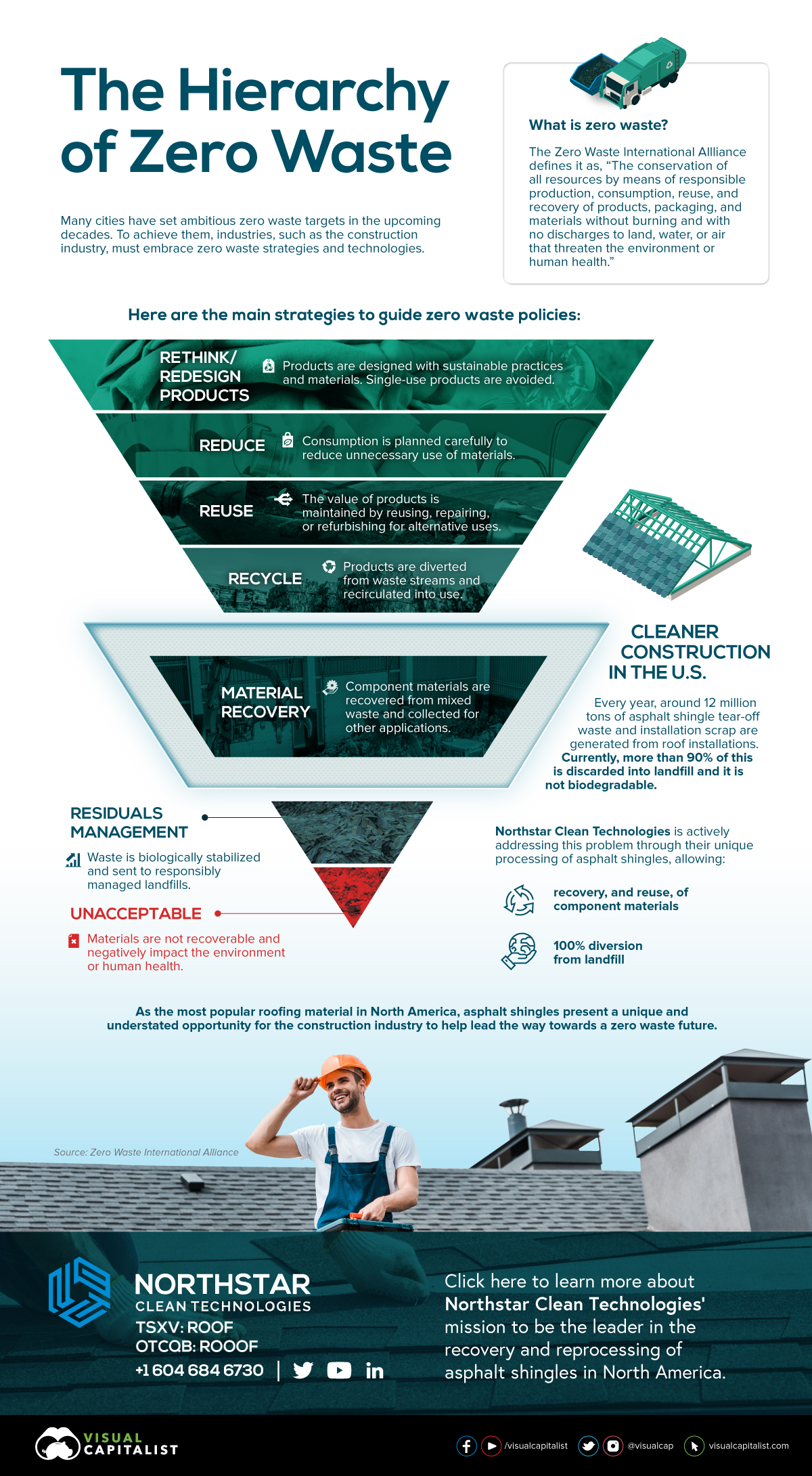
The following content is sponsored by Northstar Clean Technologies
The Hierarchy of Zero Waste
Many cities have set ambitious zero waste targets in the upcoming decades.
The idea is to have communities where waste generation is avoided, and products are shared, reused, or refurbished.
This graphic, sponsored by Northstar Clean Technologies, shows the main strategies and hierarchy to guide zero waste policies.
What is Zero Waste?
In a world that generates approximately 2 billion tons of waste every year, waste management has become a global concern. Thus, countries and cities are increasing efforts to reduce or even eliminate waste when possible.
The Zero Waste International Alliance defines zero waste as “the conservation of all resources by means of responsible production, consumption, reuse, and recovery of products, packaging, and materials without burning and with no discharges to land, water, or air that threaten the environment or human health.”
Becoming a zero waste community, however, is a complex task.
Currently, Sweden recycles 99% of locally-produced waste and is considered the best country in the world when it comes to recycling and reusing waste. However, such results only came after almost 40 years of recycling and reuse policies.
In line with this, here are seven commonly accepted steps you can use to achieve zero waste:
1. Rethink, Redesign Products
The global population consumes 110 billion tons of materials each year, but only 8.6% is reused or recycled. In a zero waste society, single-use products are avoided and products are designed with sustainable practices and materials.
2. Reduce
Consumption must be planned carefully to reduce the unnecessary use of materials. Consumers must choose products that maximize the usable lifespan and opportunities for continuous reuse. Companies must minimize the quantity and toxicity of materials used.
3. Reuse
The value of products is maintained by reusing, repairing, or refurbishing for alternative uses.
4. Recycle
Products are diverted from waste streams and recirculated into use. Resilient local markets are developed, allowing the highest and best use of materials.
5. Material Recovery
Component materials like cement, metals, or asphalt are recovered from mixed waste and collected for other applications.
In the U.S. alone, around 12 million tons of asphalt shingle tear-off waste and installation scrap are generated from roof installation each year. Currently, more than 90% of this is discarded in landfills. This material can be repurposed to create new products like liquid asphalt, fiber, and aggregate.
6. Residuals Management
Waste is biologically stabilized and sent to responsibly managed landfills.
7. Unacceptable
The production of materials that are not recoverable and can negatively impact the environment must be avoided.
Reducing our Climate Impact
Reducing, recycling, and recovering materials can be a key part of a climate change strategy to reduce our greenhouse gas emissions.
According to the U.S. Environmental Protection Agency, about 42% of all greenhouse gas emissions are caused by the production and use of goods, including food, products, and packaging.
Even though 100% zero waste may sound difficult to achieve in the near future, a zero waste approach is essential to reduce our impact on the environment.
Northstar Clean Technologies aims to become the leading recovery and reprocessing company for asphalt shingles in North America.
The post The Hierarchy of Zero Waste appeared first on Visual Capitalist.